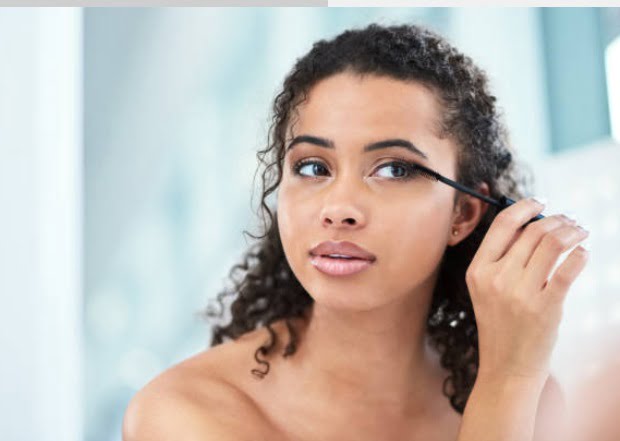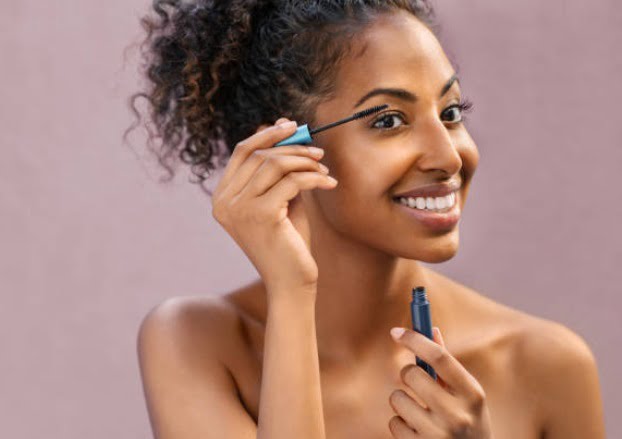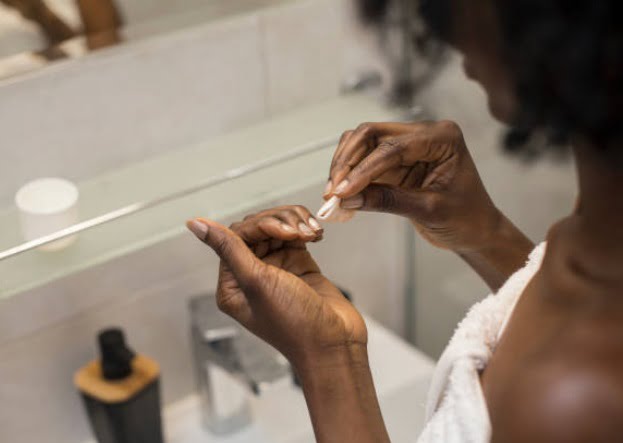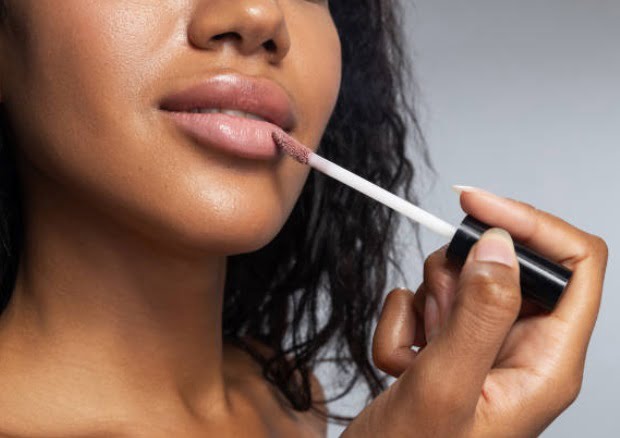
7 Most Toxic Beauty Products Every Woman Must be Aware of
How toxic are your beauty products? Do you want to know the list of toxic ingredients in beauty products? Okay, in this article, you will learn the seven most toxic beauty products that we still use anyway. Dangerous ingredients…
When it comes to beauty products, the term “non-toxic” can be difficult to decipher. And it’s not regulated by any governing body, like the FDA.
Now, many products also use the term “toxic-free” to indicate that the product “has been created without the use of any potentially toxic, carcinogenic, or poisonous ingredients that could be questionable in safety.”
While this term is also not federally regulated, it is backed by the ToxicFree Foundation.
Even with these unregulated labels, we tend to ignore the ingredients or harmfulness of some of our favorite, and most used beauty products—to our own detriment.
So let’s look at these seven of the most dangerous beauty products we still use every day.
1. Mascara

Your mascara wand gets contaminated when you use it! Bacteria grow and thrive in the dark, moist environment of your mascara tube. Even though many cosmetics contain preservatives that slow germ growth, bacteria will build up over time. This can result in certain bacterial diseases like eye cysts or pinkeye.
Pay attention to expiration dates! Also, throw away the mascara after four to six months (max) from when you first opened the tube. Do it sooner if you notice clumping or any change in texture, color, or smell.
Mascara should be disposed of and replaced, no matter the amount left in the tube or how much you paid for it!
2. Nail Polish

If you’ve ever wrinkled your nose when having your nails done (or do them yourself), you know the smell of nail Polish, and acetone remover is not the most pleasant. Do you think that may be because your Polish is trying to tell you something?
Nail polishes contain harmful chemicals that can potentially do damage, from simply discoloring nails to causing thin and brittle nails to something a bit more harmful.
In Sally Hansen Diamond Strength No Chip Nail Tone, high levels of styrene were found. Essentially used in the production of plastics and rubbers, styrene has been associated with irritation of the skin, eyes, and upper respiratory tract.
Long-term exposure to styrene in humans can adversely affect the central nervous system, causing headache, fatigue, weakness, depression, hearing loss, and nerve damage.
Many brands market themselves as five-free. This refers to polishes that do not contain five specific ingredients: formaldehyde, toluene, dibutyl phthalate, formaldehyde resin, and camphor. And removers do not fare much better.
Nail polish remover generally contains things like isopropyl acetone, which can irritate the eyes and lungs, and ethyl acetate, which acts as a respiratory system and eye irritant.
Another possible ingredient, methyl ethyl ketone, maybe a neurotoxin. Oh, goody! So, in addition to the Polish, the remover can prove harmful, with long-term use even developing into myeloma. I think I’ll stick with natural nails from now on.
3. Perfume

Perfume is something that we’ve been utilizing for centuries, giving little consideration to how unsafe it may be to our health. Even the most wonderful eye-catching, stunning perfume bottles are simply…chemicals.
Perfume ingredient chemicals are complex combinations of synthetic and/or natural substances which are added to products to give them a distinctive scent.
They are loaded with synthetic substances like coumarin, BHT, citral, benzyl salicylate, oxybenzone, and lilial. The last ingredient, lilial, is also known as butylphenyl methylpropional and is linked to cancer. The EU has prohibited its use beginning March 2022.
So check out what your favorite scent is made of before shelling out your hard-earned money!
4. Setting Powder

Nobody likes to have an oily face. Hey, neither do I. After all that time and work we’ve done to get that flawless look for the day, we need to do something to keep it looking good. Which is the reason setting powders and sprays are so popular. Yet, you might be placing yourself in harm’s way when attempting to conceal your shine.
These popular products include ingredients like talc, titanium dioxide, and polytetrafluoroethylene.
Talc is a naturally occurring substance, but it shouldn’t be inhaled or swallowed; both can prove harmful and cause eye and lung irritation, chest pain, lethargy, vomiting, diarrhea, and coma.
Titanium dioxide is a UV filter that should not be in your pressed or loose powders (in lotions and creams, it’s low risk).
And that last ingredient — polytetrafluoroethylene—well, that’s Teflon. Yep, that stuff that keeps your eggs from sticking to the pan! After all that, a little shine doesn’t seem like a terrible thing, right?
5. Lip Gloss

On the off chance that you thought lip shine or lip loss was only a nuisance when getting your hair stuck to it on a blustery day, you haven’t heard anything yet.
Sephora’s fave brand, Philosophy, has lip shine products that are drool-worthy in how great they smell, with aromas like Pink Frosted Animal Cracker, Peppermint Stick, and Senorita Margarita.
All things considered, it shouldn’t be surprising that these scrumptious flavors have lots of aroma to them. But they are both drying and irritating. And that’s just the beginning.
The Senorita Margarita flavor additionally contains citral. Even though citral is a natural ingredient derived from plant sources, it can still lead to potentially serious allergic reactions.
Symptoms of an allergic reaction to citral may include rashes, blisters, itchy skin, and swollen eyes and lips. It’s important to be aware that just because something is natural doesn’t mean it is completely safe or without side effects. Often, the opposite is true.
In addition, some lip glosses contain lead, cadmium, chromium, aluminum, and five other toxic metals.
6. Blush

Blush should bring life and color back to your face, isn’t that so? So why do so many blushers contain formaldehyde? Found in CoverGirl Cheekers Face Blush and CoverGirl Instant Cheekbones Contouring Blush (in an assortment of tones), it’s really horrible to imagine that such a chemical is being used on the face. Showing up as a few different substances in these items, you will find them under two names: polyoxymethylene urea and quaternium-15.
Polyoxymethylene urea is a synthetic polymer used by the cosmetic industry as a bulking agent and to form the outer shell of microcapsules (that hold the color in this case).
It is also a formaldehyde releaser that—you got it—releases formaldehyde over time. It’s been connected to organ damage and viewed as an allergen. Quaternium-15 is a formaldehyde-releasing preservative. It’s likely a wise option to leave any products containing these chemicals on the shelf.
7. SPF Foundation
With the information we have now about skin diseases and tanning, an ever-increasing number of brands have been adding SPF to the items that are used all over the face.
From foundations to BB creams to concealers, added SPF gives us the feeling that we’re shielding ourselves from harmful UV rays. Then again, actually, we’re not.
To get the SPF advantages of sunscreen in a foundation, we’d need to apply much more than we really do, which is something that major beauty care product companies don’t tell us.
For CoverGirl’s Outlive Stay Fabulous 3-in-1 Foundation with SPF in any available shade, the EWG found that the SPF protection was insignificant—and definitely not what was being advertised. For most makeup containing SPF, the actual amount of sunscreen applied to the face is minimal, leaving the skin exposed.
So it’s best to use regular sunscreen first, then apply any makeup containing SPF, if you prefer. Oh, but don’t think that your 30 SPF sunscreen and 18 SPF foundation means you have 48 SPF coverage—sunscreen is only as strong as the highest SPF from a single product.
What are the most toxic beauty products
10 Ingredients to Avoid in Skincare Products: Petroleum Jelly, Fragrance, Oxybenzone, Phthalates, Formaldehyde, Ethanolamines, 1,4-Dioxane, Butylated hydroxytoluene and butylated hydroxyanisole.
Butylated hydroxytoluene (BHT) and butylated hydroxyanisole (BHA), are used as preservatives in both personal care products and food.
List of toxic ingredients in beauty products
- Formaldehyde, a known carcinogen.
- Paraformaldehyde, a type of formaldehyde.
- Methylene glycol, a type of formaldehyde.
- Quaternium 15, which releases formaldehyde.
- Mercury, which can damage the kidneys and nervous system.
